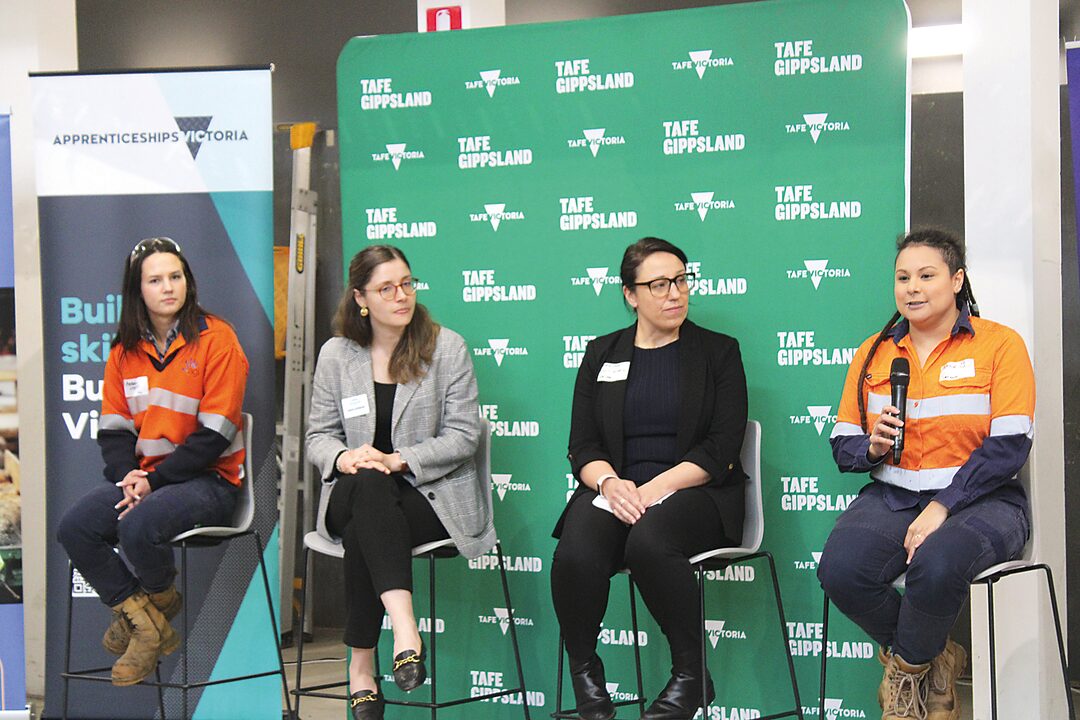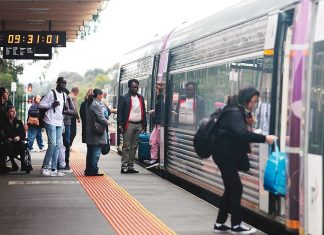By AIDAN KNIGHT
A NEW federal initiative is set to power up Gippsland’s clean energy future, and bring more women into the trades driving it.
As the Latrobe Valley nears its inevitable phasing out of coal power, the federal government has placed a further emphasis on it’s goals of increasing female participation in male-dominated trades, in the shape of the ‘Powering Her Pathway’ initiative.
With only 16 per cent of the energy sector currently women (and six per cent of energy apprentices), and 40,000 new workers required in the next 10 years, the government sees this as more of an opportunity than a problem.
Following his visit to the Hazelwood battery site last month, Minister for Skills and Training Andrew Giles gave a presser at TAFE Gippsland, Morwell, in collaboration with Engie. These three partners are working together to provide the localised initative taking place across multiple Gippsland locations, including Morwell, Loy Yang, Yallourn and Hazelwood.
“Strong partnerships are at the heard of this work,” the Minister said.
“By bringing together industry, education and community organisations, we’re building momentum for lasting change across sectors that are critical to Australia’s clean energy future.
“By investing in inclusive training and workplace practices, the Albanese government is working to open doors to skilled careers and help build a future workforce that reflects the diversity of local communities, including here in Gippsland.”
When asked by the Express why such an initiative had not been introduced earlier in Labor’s term, earlier that day at the Hazelwood Battery site, Mr Giles said the timing reflected the government’s renewed focus on clean energy job creation.
Then TAFE Gippsland Chief Executive Laura Macpherson elaborated on the institutions perspective after the Minister’s address, stating “Gippsland is already home to some amazingly talented tradeswomen working in clean energy, and this project is a way of providing this opportunity to others who may need some assistance getting there.”
“TAFE Gippsland is dedicated to leading the way in clean energy training during this period of major transition in the energy sector and we are pleased to be able to provide this opportunity to train and nurture women in what is a traditionally male workforce.”
According to the Clean Energy Council, women’s participation in renewables has grown only marginally over the past decade, despite several state and federal diversity programs.
The Minister’s speech was followed by a panel discussion between program partners exploring the experiences, challenges, and opportunities for women in the clean energy sector. Those speaking were:
Amber Leyshan, Engineering and Boilermaking Apprentice at TAFE Gippsland, her interest sparked by managing a trade department at Bunnings;
Dr Arana Sandry from RMIT University, bringing a research perspective onto women in trades and how to encourage them into the field;
Laura Letteron from Engie, and;
Siobhan Kinman, qualified electrician at the Hazelwood battery site, and trained at TAFE Gippsland.
Dr Sandry revealed that women’s low participation is not usually due to lack of interest, but persistent workplace barriers including unconscious bias and challenging work environments.
This prompted a comment from Ms Kinman, who said the problem was so deep even she had perceived herself as having an unconscious bias to an extent, and that “you can’t be what you can’t see”. To her, the message was clear.
“Do it. Absolutely do it. Give it a go. Try again, even if you fail. Seek help, seek advice. Just get out there.”
Ms Leyshan, a young apprentice, brought a fresh perspective that resonated with the audience.
“One of my tradesmen told me something I’ll never forget,” she shared. “He said, ‘We’ve all started where you are. We grew up with dads in sheds, learning these skills. You’re just at the beginning of your journey.” That completely changed how I saw myself in the industry.”
This highlights some of the imposter syndrome Ms Kinman spoke on, telling the crowd she had to spend significant time (when she received her role) reminding herself she earnt her place, beating 500 candidates by her own merit. Such is the aura of hostility in male-dominated fields, that tradeswomen like Ms Kinman and Ms Sandry felt they would be resented for not being afforded the luxury many boys grew up in, in that “shed-time throwing a hammer around”.
Ms Kinman had such a positive experience in her electrical apprenticeship that she is now undergoing a second, in instrumentation. Both women quit their retail jobs to undertake their training, completely flipping the script as they left traditionally female-dominated fields, for ones almost entirely comprised of men.
“Having this confidence has helped outside of work as I feel more confident in myself to try new things and meet and network with new people,” Ms Leyshan said of the bold move.
“I’d love to see more women in non-traditional roles – trying to challenge themselves and put themselves out there into more career pathways that maybe they haven’t considered before or maybe that they’ve been scared to try before.”
The project will see almost $1 million invested, as part of the wider $60 million allocated to the federal government’s Building Women’s Careers program to break down barriers in the clean energy sector. While the initiative has been welcomed as a step toward equality, some in the region say structural barriers and limited job security in the clean energy sector remain major obstacles.
Whether Powering Her Pathway can significantly shift the gender balance remains to be seen, but for women like Siobhan and Amber, it marks an overdue opportunity to claim their place in Gippsland’s energy future.











